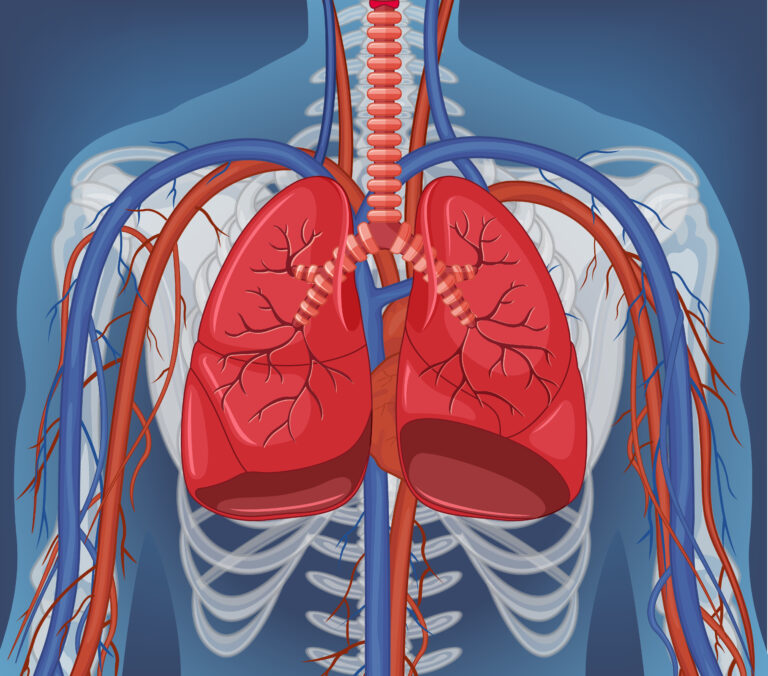Total Anomalous Pulmonary Venous Connection (TAPVC) Surgery
The pulmonary veins are crucial blood vessels within the circulatory system responsible for transporting oxygenated blood from the lungs back to the heart.
In particular, there are four pulmonary veins, with two on the left side and two on the right side. These veins play a vital role in replenishing the heart with oxygen-rich blood, which is then pumped out to nourish the body’s tissues.
In cases of Total Anomalous Pulmonary Venous Return (TAPVR), a rare congenital heart defect, there is a significant abnormality in the way these pulmonary veins are connected to the heart. Normally, the pulmonary veins from both sides of the body should merge and attach to the left atrium of the heart, allowing oxygenated blood to flow seamlessly into the heart’s circulation system.

Symptoms
A newborn with Total Anomalous Pulmonary Venous Return (TAPVR) may exhibit breathing difficulties and a bluish discoloration of the skin (cyanosis). This bluish appearance results from the insufficient oxygen levels in the blood that is being circulated to the body. Additionally, the limited or obstructed blood flow through the abnormal connections of the pulmonary veins can contribute to these symptoms.
Doctors often identify signs and symptoms of TAPVR shortly after birth, as the condition can significantly affect oxygenation and blood flow. However, it’s worth noting that in some cases, children with TAPVR may not display noticeable symptoms until later in life. This variability in presentation underscores the importance of early diagnosis and medical intervention to address the congenital heart defect and ensure proper oxygenation of the blood and circulation to the body’s tissues.
When to access Medical Care
This medical procedure is crucial to address the severe symptoms of Total Anomalous Pulmonary Venous Return (TAPVR), which can be life-threatening. Due to the reduced oxygen levels in the blood, newborns with TAPVR may appear bluish and struggle with breathing. In some cases, these symptoms develop immediately, while in others, they may become apparent later.
Healthcare providers recommend surgery as the definitive treatment for all cases of TAPVR, even if the symptoms initially appear mild. Untreated TAPVR typically leads to a fatal outcome.
Surgery is deemed necessary in all instances of TAPVR, but in some cases, infants may require certain interventions before undergoing surgery. These preparatory measures aim to stabilize the baby’s condition, reducing the risks associated with surgery. These preparatory treatments may include:
- Oxygen therapy to improve oxygen levels in the blood.
- Mechanical ventilation to assist with breathing.
- Extracorporeal membrane oxygenation (ECMO), a procedure that temporarily takes over the functions of the heart and lungs.
It’s important to note that in most cases, the exact cause of TAPVR remains unknown. Occasionally, TAPVR may co-occur with other congenital heart defects, further complicating the condition.
Determinants of risk
The majority of infants who undergo TAPVR surgery tend to recover successfully; however, there is a possibility of complications arising as well. Unfortunately, some infants may not survive the surgical procedure. The risk factors for complications can vary depending on the overall health of the child and the specific heart and vascular issues present. It’s essential to have a discussion with your child’s healthcare provider to understand the specific risks associated with your child’s case. Potential risks may encompass:
- Excessive bleeding during or after surgery.
- Infections related to the surgical site.
- Formation of blood clots, which could lead to complications like strokes or other health issues.
- Irregular heart rhythms, which, in rare cases, may result in death.
- Heart block, a condition that might necessitate the use of a pacemaker.
- Complications related to anesthesia.
- Unfortunately, in some cases, the risk of mortality.
Additionally, your child may require follow-up surgeries or catheterization procedures in the future. This is more likely to occur during the first year following the initial surgery to ensure ongoing management and proper functioning of the repaired heart.
Recovery process
Recovery duration varies, contingent on factors like patient characteristics, chosen procedure, and the extent of severity.
Why entrust your care to us?
At Steps 2 Cure, our foundation of trust is built upon several key pillars that ensure your confidence in our services and expertise. Our team comprises highly qualified professionals with extensive experience in their respective fields. Their knowledge and skills enable us to offer you the best possible care and solutions for your medical needs. We understand that each individual is unique, and so are their healthcare requirements.
That’s why we prioritize tailoring our treatments and approaches to your specific circumstances, ensuring that you receive care that is truly designed for you. You are at the heart of everything we do. Your comfort, concerns, and aspirations guide our efforts. Our compassionate approach ensures that you feel valued and supported throughout your healthcare experience.
To commence the treatment procedure, you can start by forwarding your questions via WhatsApp at (+91 99xxxxxxxxx) or by sending an email to care@steps2cure.com. Our team will ensure a swift response to your queries.
Transcatheter Aortic Valve Implantation (TAVI)
Still have a Query?
Your health and peace of mind matter to us, and we’re dedicated to addressing any inquiries you may have with care and expertise. Feel free to reach out.
Subsribe To Our Newsletter
Stay in touch with us to get latest news and special offers.

